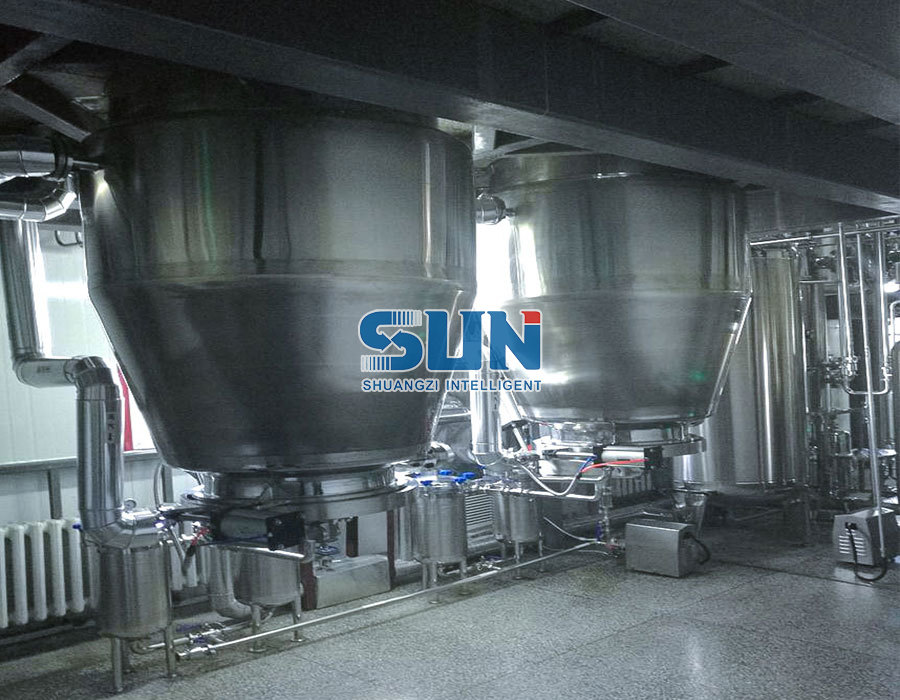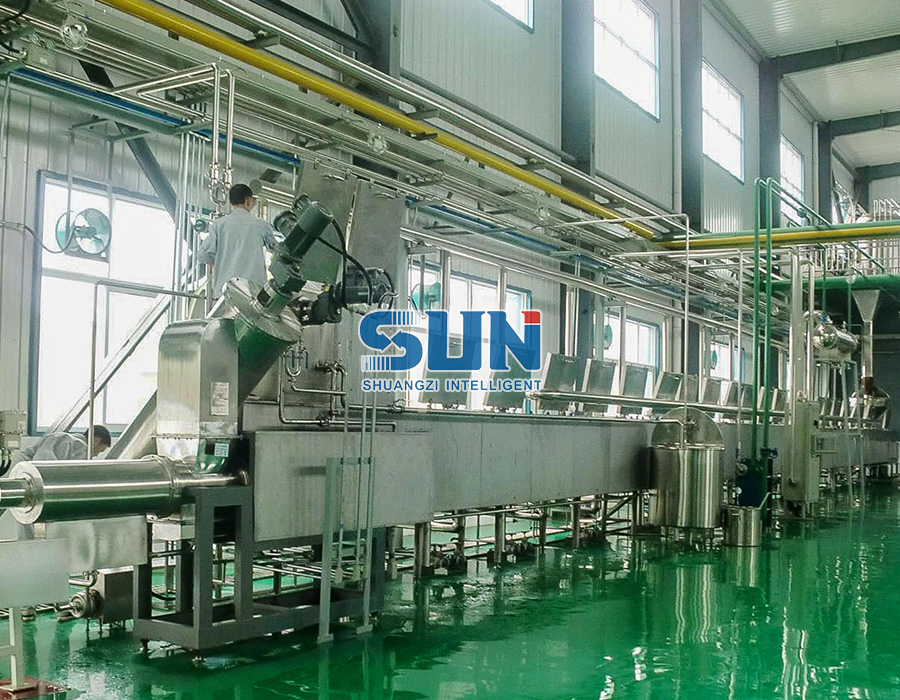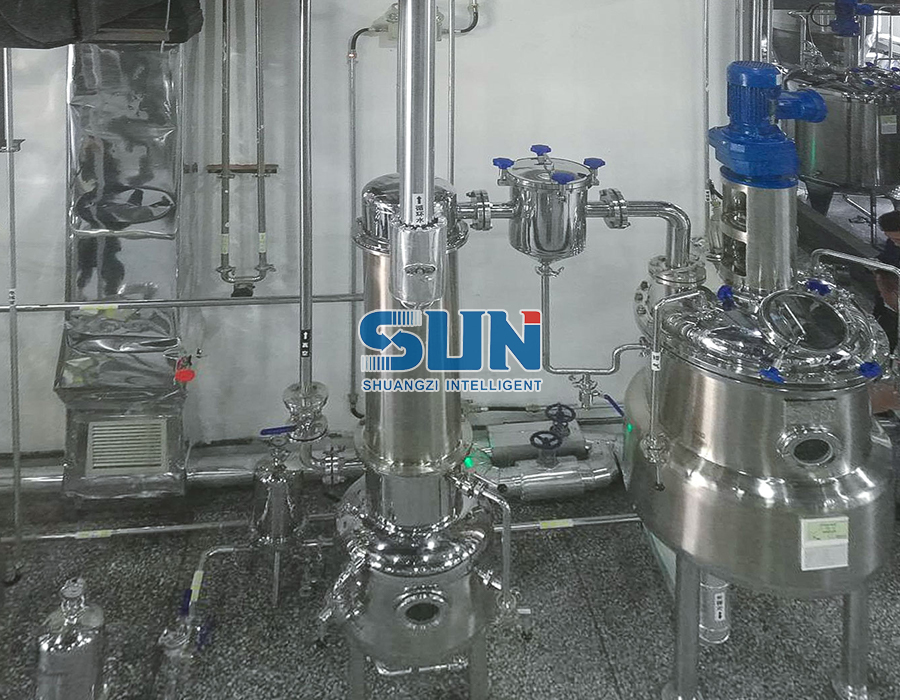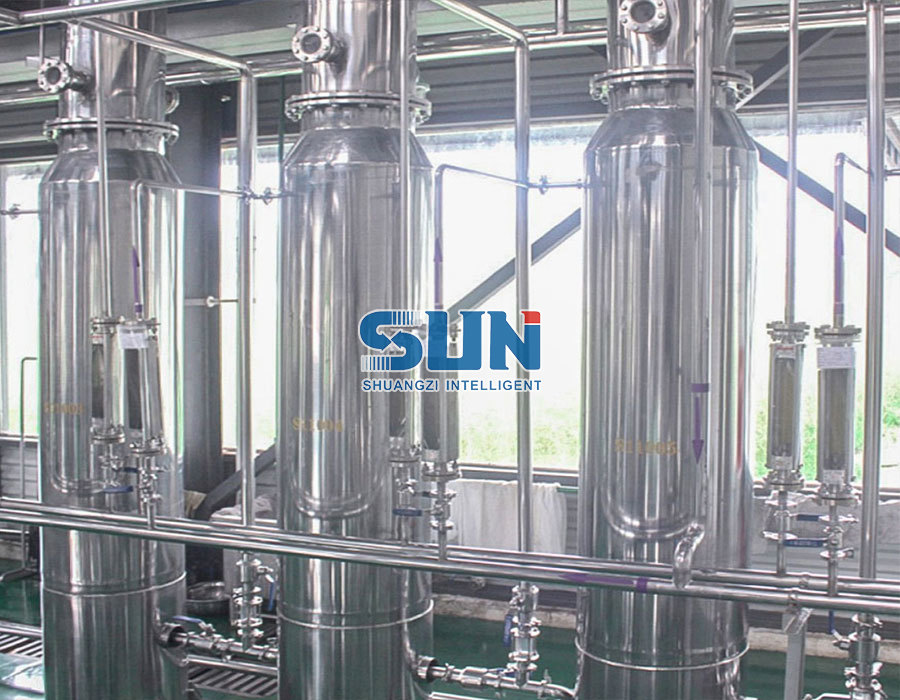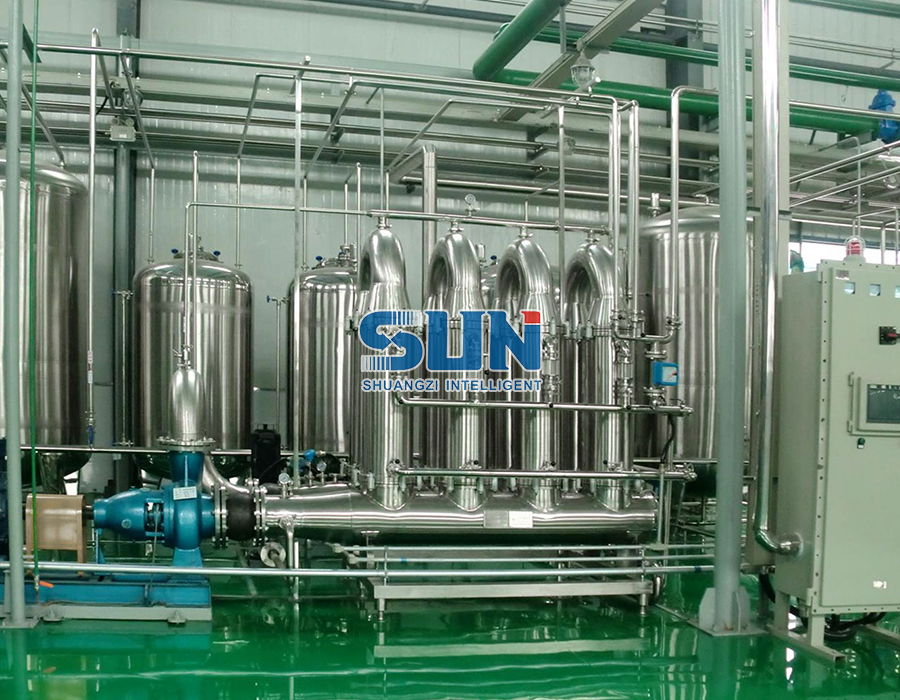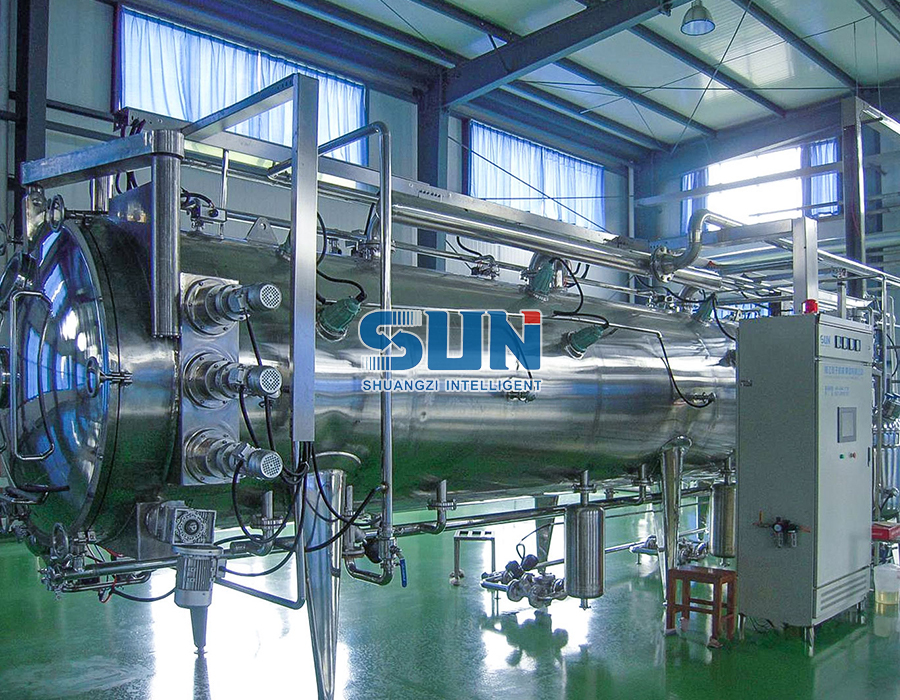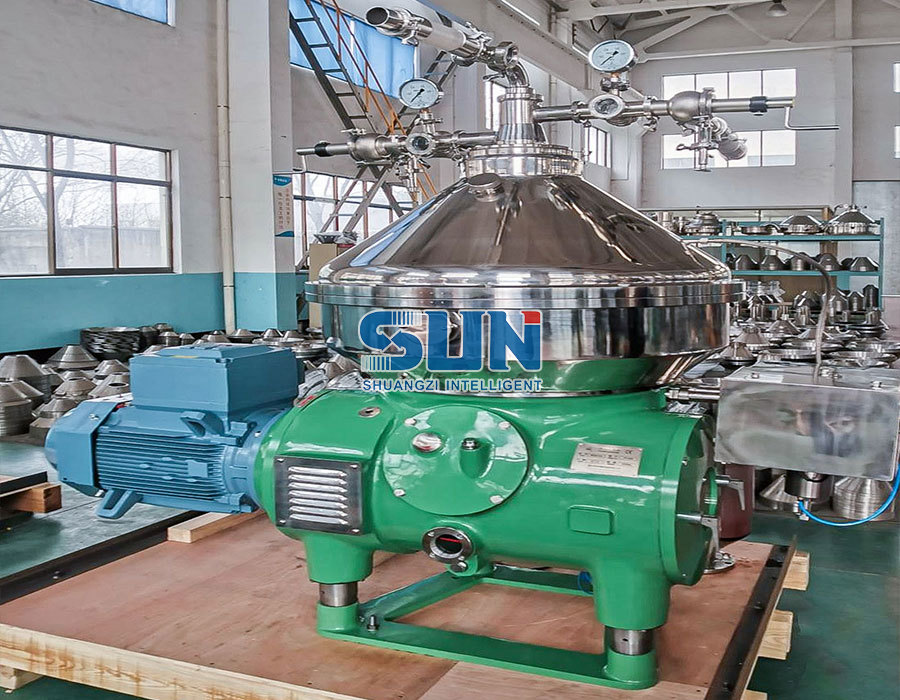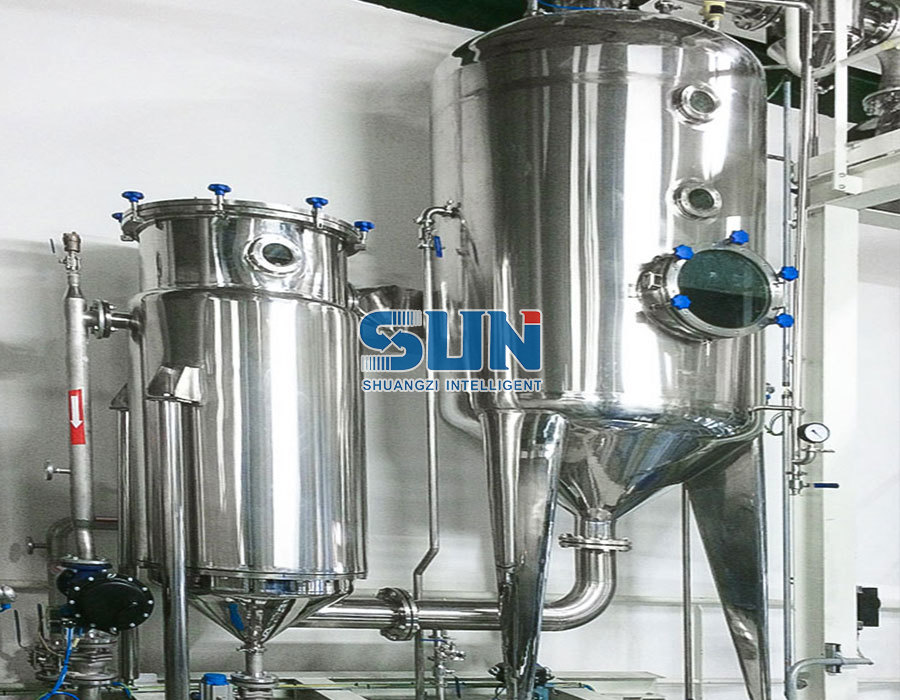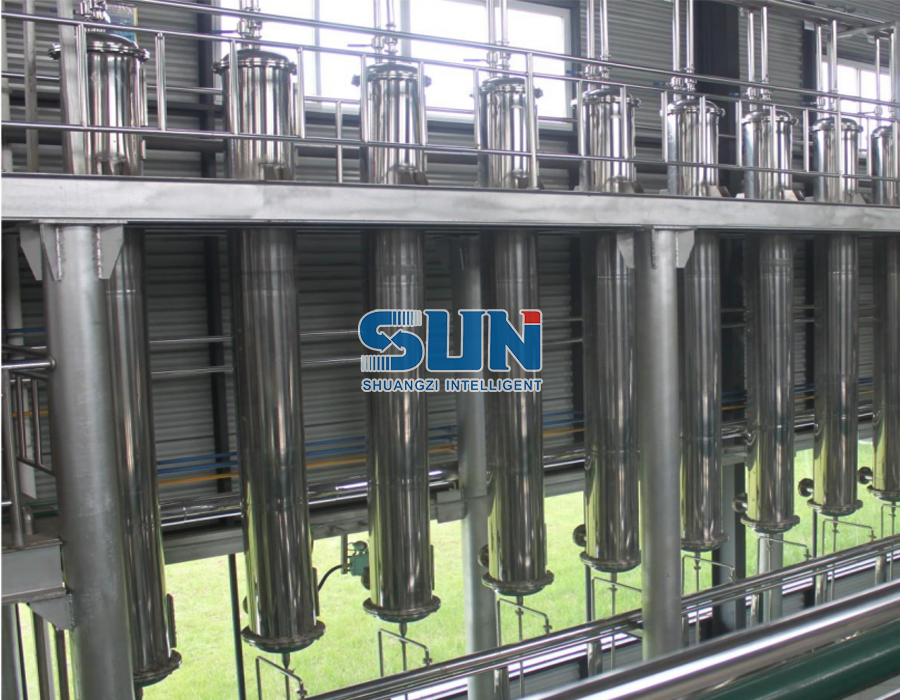In the relentless pursuit of industrial efficiency, particularly where concentration, crystallization, or volume reduction of aqueous solutions is paramount, one technology consistently rises to the top for its remarkable energy savings: the Mechanical Vapor Recompression (MVR) Evaporator. Moving beyond the significant energy drain of traditional multi-effect evaporators, MVR systems represent a sophisticated leap forward, harnessing the latent heat within vapor itself to drastically cut operational costs and environmental footprint. This article delves deep into the workings, advantages, applications, and considerations of MVR evaporator technology, providing a clear understanding of why it’s often the preferred choice for modern, sustainable industrial processes.
Understanding the Core Problem: The Energy Cost of Evaporation
Evaporation is fundamentally about adding heat to turn liquid (usually water) into vapor. In traditional evaporators, this heat is typically supplied by fresh steam generated in a boiler. Each kilogram of water evaporated requires a significant amount of energy – approximately 2,260 kJ (540 kcal) at atmospheric pressure, its latent heat of vaporization. In multi-effect systems, vapor generated in one effect is used as the heating medium for the next effect at a lower pressure (and thus lower temperature), improving efficiency. However, the final vapor from the last effect still contains substantial latent heat, usually dissipated to the environment via condensers cooled by water or air. This represents a massive waste of energy.
The MVR Solution: Closing the Energy Loop
The MVR evaporator principle is elegantly simple yet profoundly effective: recover and reuse the latent heat contained in the vapor generated from the boiling process, instead of discarding it.
Here’s how a typical MVR evaporator system operates:
Evaporation: Feed solution enters the evaporator and is heated, causing water to evaporate. This happens in a heat exchanger (calandria) typically using steam tubes or plates.
Vapor Generation: The evaporation process produces vapor.
Vapor Compression: This is the heart of the MVR process. Instead of being sent to a condenser and wasted, the vapor produced is drawn into a mechanical vapor compressor. This compressor (usually a high-speed centrifugal fan, turbo compressor, or sometimes a positive displacement type like a Roots blower for lower volumes) increases the vapor’s pressure and, consequently, its saturation temperature.
Heat Reuse: The compressed vapor, now at a higher pressure and temperature than the boiling solution in the evaporator, is fed back into the heat exchanger (calandria). Here, it condenses on the heating surface, releasing its latent heat. This released heat is used to evaporate more feed solution.
Condensate Removal: The condensed vapor (now hot, clean condensate) is removed from the system. This condensate often holds significant thermal value and can be used elsewhere in the plant for pre-heating or cleaning.
Concentrate Removal: The concentrated solution (product) is continuously or intermittently bled off from the evaporator body.
The Crucial Role of the Compressor
The mechanical vapor compressor is the powerhouse enabling the MVR cycle. It performs the critical task of elevating the vapor’s energy state. Key considerations for compressors include:
Compression Ratio: The ratio of discharge pressure to suction pressure. This determines the achievable temperature lift. Higher concentration solutions (higher boiling point elevation - BPE) require higher compression ratios.
Type: Centrifugal compressors dominate for medium to large capacities due to high efficiency and reliability. Positive displacement compressors (Roots blowers) might be used for smaller systems or applications requiring higher compression ratios at lower flow rates.
Energy Input: The compressor is the primary consumer of external energy in an MVR system. However, the energy required to drive the compressor is significantly less than the latent heat recovered and reused. Typically, only 20-50 kWh of electrical energy is needed per ton of water evaporated, compared to the equivalent of 600-1000 kWh/ton if using fresh steam without heat recovery. This highlights the energy efficiency of MVR evaporators.
Control: Compressor speed control (via VFDs) is crucial for matching the system’s capacity to process requirements and maintaining stable operation.
Key Components Beyond the Compressor
A complete MVR evaporator system integrates several vital components:
Evaporator Body/Vessel: Where boiling and vapor-liquid separation occur. Designs include forced circulation (FC), falling film (FF), and rising film (RF), each suited to different product characteristics (viscosity, fouling tendency, solids content).
Heat Exchanger (Calandria): The surface where heat transfer occurs (vapor condensation on one side, solution evaporation on the other). Materials of construction (stainless steel, duplex, titanium, nickel alloys) are critical for corrosion resistance.
Separator: Ensures efficient separation of vapor from the liquid concentrate or crystals. Critical for preventing liquid carryover to the compressor.
Preheater(s): Utilize waste heat (often from hot condensate or concentrate) to pre-heat the feed solution, maximizing overall energy efficiency.
Pumps: Feed pump, circulation pump (in FC systems), concentrate pump, condensate pump.
Vent Condenser: Handles non-condensable gases (NCGs) that may enter the system, preventing accumulation which reduces heat transfer efficiency.
Control System (PLC/DCS): Sophisticated controls manage compressor speed, levels, temperatures, pressures, and flows for safe, stable, and optimized operation. MVR evaporator control strategies are vital for efficiency.
Why Choose MVR? Compelling Advantages
The benefits of MVR technology for evaporation are substantial and drive its adoption:
Exceptional Energy Efficiency: This is the paramount advantage. By recycling the vapor’s latent heat, MVR systems reduce external energy consumption by up to 90% compared to single-effect evaporators and significantly outperform multi-effect systems. MVR evaporator energy savings translate directly to lower operating costs (OPEX) and a reduced carbon footprint.
Low Operating Costs: While electricity costs (for the compressor drive) are a factor, the drastic reduction in steam boiler fuel (gas, oil, coal) or purchased steam costs makes MVR highly economical over the system’s lifetime. Reduced cooling water requirements also save costs.
Environmental Sustainability: Lower energy consumption directly correlates to reduced greenhouse gas emissions (Scope 1 & 2). Smaller cooling water demand also lessens environmental impact.
Compact Footprint: MVR systems typically require less space than equivalent capacity multi-effect evaporators due to the elimination of multiple effects and large condensers/cooling towers.
Operational Simplicity (Once Running): Primarily requires electricity. Steam boilers, complex steam distribution networks, and large cooling water systems are often eliminated, simplifying auxiliary systems.
High Flexibility: Modern MVR systems with variable speed compressors can handle significant turndown ratios, adapting well to fluctuating feed rates or concentrations.
High-Quality Condensate: The condensate produced is typically very pure (often near distilled water quality) and hot, offering potential for reuse within the plant (e.g., boiler feedwater, cleaning), further enhancing efficiency.

MVR vs. Traditional Evaporators: A Clear Comparison
The following table summarizes the key differences between MVR and traditional multi-effect evaporators:
| Feature | MVR Evaporator | Traditional Multi-Effect Evaporator |
|---|---|---|
| Primary Energy Source | Electricity (for compressor) | Steam (Requires boiler fuel - gas, oil, coal, etc.) |
| Energy Efficiency | Very High (Recycles latent heat via compression) | Moderate to Good (Reuses latent heat across multiple effects) |
| Operating Cost (OPEX) | Low (Primarily electricity cost) | Higher (Steam generation cost dominates) |
| Capital Cost (CAPEX) | Higher (Due to compressor cost) | Lower (Per effect, but more effects needed) |
| Cooling Water Requirement | Very Low or None (No major vapor condenser) | High (Required for final effect condenser) |
| Footprint | Compact | Larger (Requires multiple vessels, condensers) |
| Complexity | Moderate (Centered on compressor control) | Moderate (Steam balancing, multiple vessels) |
| Flexibility/Turndown | High (Easily controlled via compressor speed) | Lower (More complex to balance across effects) |
| Best Suited For | Applications where electricity is cost-effective vs. steam; High energy cost locations; Space constraints | Applications with cheap steam availability; Lower electricity costs; Very large capacities where MVR compressor size becomes impractical |
Where MVR Excels: Key Applications
MVR evaporator applications span numerous industries where concentration, crystallization, or zero liquid discharge (ZLD) is critical:
Wastewater Treatment & ZLD:
Concentrating industrial effluents (chemical, pharmaceutical, textile, landfill leachate) for volume reduction prior to disposal or crystallization.
Recovering valuable process water as high-purity condensate.
Crucial component in Zero Liquid Discharge (ZLD) systems.
Industrial wastewater evaporation with MVR is a major growth area.
Food & Beverage Industry:
Concentrating fruit juices (tomato, apple, orange), dairy products (milk, whey), coffee, tea extracts, sugar solutions.
Gentle falling film designs preserve heat-sensitive flavors and nutrients.
Food grade MVR evaporator systems are common.
Chemical & Pharmaceutical Industry:
Concentration of salts, acids, alkalis, organic intermediates, and APIs (Active Pharmaceutical Ingredients).
Solvent recovery.
Crystallization processes.
Requires high corrosion resistance materials (Hastelloy, titanium, graphite).
Pulp & Paper Industry:
Concentrating black liquor (in smaller mills or sidestreams), spent cooking liquors, and foul condensates.
Desalination:
Pre-concentrating seawater or brackish water feed for Reverse Osmosis (RO) or as part of thermal desalination processes (often hybrid systems).
Critical Design and Operational Considerations
While powerful, MVR isn’t a universal panacea. Careful consideration of these factors is essential for successful implementation:
Boiling Point Elevation (BPE): Dissolved solids increase the solution’s boiling point compared to pure water at the same pressure. Higher BPE requires the compressor to achieve a larger temperature lift (higher compression ratio), increasing energy consumption and potentially limiting the maximum achievable concentration or requiring more expensive compressor designs. Solutions with very high BPE (e.g., concentrated NaOH, CaCl₂) can challenge standard MVR economics.
Fouling and Scaling: Deposits on heat transfer surfaces drastically reduce efficiency. Design choice (e.g., forced circulation for heavy scaling/fouling, falling film for less fouling), material selection, CIP (Clean-In-Place) systems, and operational parameters (velocity, temperature) are crucial for MVR evaporator design for fouling solutions.
Feed Characteristics: Viscosity, suspended solids content, corrosiveness, thermal sensitivity, and foaming tendency significantly influence the optimal evaporator type (FC, FF, RF) and material selection.
Compressor Selection and Limits: Centrifugal compressors have practical limits on compression ratio and volume flow. Very large capacities or very high BPE applications might require multiple compressors in series/parallel or may be better suited to Thermal Vapor Recompression (TVR) or multi-effect hybrids. MVR compressor selection guide is vital engineering work.
Capital Cost (CAPEX): The high cost of the compressor makes MVR systems have a higher initial investment than simple single-effect evaporators. The justification comes from the much lower OPEX. A thorough lifecycle cost analysis is essential.
Electrical Power Cost & Reliability: MVR shifts energy costs from fuel to electricity. The viability depends heavily on local electricity prices and grid reliability. Backup power may be necessary for critical processes.
Control Complexity: Precise control of levels, temperatures, pressures, and compressor speed is essential for stable and efficient operation, requiring sophisticated instrumentation and control systems.
MVR in Hybrid and Advanced Configurations
MVR technology is often integrated into more complex systems for optimal performance:
MVR + Multi-Effect: An MVR unit can serve as the first effect in a multi-effect train, providing highly efficient initial concentration, with subsequent effects utilizing the vapor at progressively lower pressures. This is common for very high capacities or high BPE feeds where a single MVR compressor becomes impractical.
MVR + Crystallizer: MVR evaporators efficiently concentrate solutions to supersaturation, feeding directly into crystallizers for solid product recovery, common in salt production and ZLD.
MVR + Reverse Osmosis (RO): In ZLD or high-recovery desalination, MVR can concentrate RO brines further, minimizing the final waste volume for crystallization/disposal.
Thermal Vapor Recompression (TVR): Uses a steam jet thermo-compressor instead of a mechanical compressor to boost vapor pressure. Often lower CAPEX but lower efficiency than MVR, suitable where high-pressure steam is readily available. Comparing MVR and TVR evaporators is a common evaluation.
The Future of MVR Technology
Continuous improvement drives MVR evolution:
Advanced Compressors: Development of more efficient compressors capable of higher compression ratios and wider operating ranges.
Improved Materials: Corrosion-resistant alloys and specialized coatings extending equipment life in harsh environments.
Enhanced Heat Transfer Surfaces: Designs promoting higher heat transfer coefficients and reducing fouling tendencies.
Sophisticated Control & AI: Advanced process control algorithms and AI-driven optimization for maximizing energy efficiency and predictive maintenance. MVR evaporator optimization techniques are evolving.
Modular & Skid-Mounted Designs: Faster installation and commissioning, particularly for standard applications.
Focus on ZLD and Resource Recovery: MVR is increasingly central to sustainable water management and material recovery strategies.
Conclusion
The MVR evaporator system stands as a testament to engineering ingenuity in the pursuit of efficiency and sustainability. By cleverly harnessing the latent heat within its own vapor through mechanical recompression, it dramatically slashes the energy demands of evaporation – historically one of the most energy-intensive unit operations. While the initial investment is higher, the compelling operational cost benefits of MVR, driven by drastically lower energy and cooling water consumption, ensure a strong return on investment over the system’s lifespan. Its compact footprint, operational simplicity (post-commissioning), and environmental credentials further enhance its appeal.
Understanding the technology’s nuances – particularly the impact of Boiling Point Elevation, fouling potential, and the critical role of compressor selection – is vital for successful application. From treating challenging industrial wastewater to concentrating valuable food products and enabling Zero Liquid Discharge, MVR technology offers a powerful, efficient, and increasingly essential solution for industries worldwide. As compressor technology advances and control systems become smarter, the role of MVR in promoting sustainable industrial processes is only set to grow. For any operation facing significant evaporation loads, a detailed evaluation incorporating MVR evaporator feasibility studies is a crucial step towards lower costs and a greener footprint.


 英语
英语 俄语
俄语